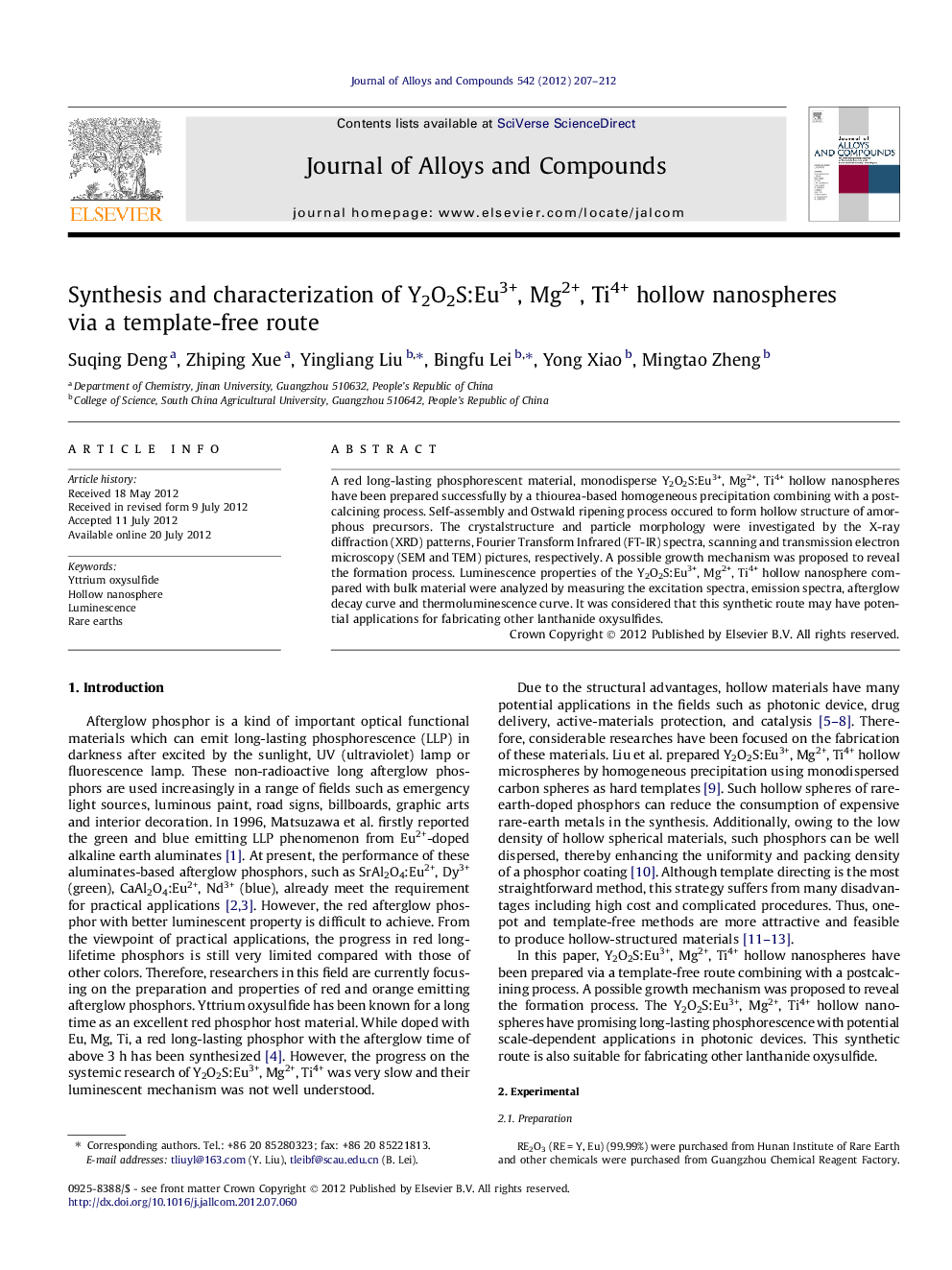| Article ID | Journal | Published Year | Pages | File Type |
|---|---|---|---|---|
| 1615348 | Journal of Alloys and Compounds | 2012 | 6 Pages |
A red long-lasting phosphorescent material, monodisperse Y2O2S:Eu3+, Mg2+, Ti4+ hollow nanospheres have been prepared successfully by a thiourea-based homogeneous precipitation combining with a postcalcining process. Self-assembly and Ostwald ripening process occured to form hollow structure of amorphous precursors. The crystalstructure and particle morphology were investigated by the X-ray diffraction (XRD) patterns, Fourier Transform Infrared (FT-IR) spectra, scanning and transmission electron microscopy (SEM and TEM) pictures, respectively. A possible growth mechanism was proposed to reveal the formation process. Luminescence properties of the Y2O2S:Eu3+, Mg2+, Ti4+ hollow nanosphere compared with bulk material were analyzed by measuring the excitation spectra, emission spectra, afterglow decay curve and thermoluminescence curve. It was considered that this synthetic route may have potential applications for fabricating other lanthanide oxysulfides.
Graphical abstractFigure optionsDownload full-size imageDownload as PowerPoint slideHighlights► Self-assembly and Ostwald ripening process occured to form hollow structure of amorphous precursors. ► The hollow phosphor with diameters of 90–150 nm inherited the sphere-like shape from the precursor after calcined at CS2 atmosphere. ► The long-lasting phosphorescence was due to the persistent energy transfer from the traps to the Ti4+ and Mg2+ ions.
